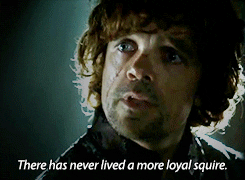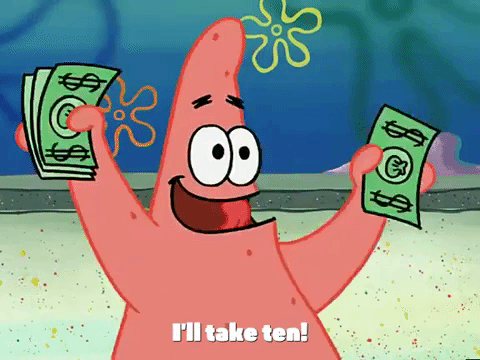What is content marketing and why is it important for your brand?
By: Lianna Haywood | SEO Lead
In its simplest form, content marketing is a strategic digital marketing approach which involves creating and distributing online media, in various formats, to grow interest for a particular topic... without directly promoting a brand.
Stick with me, it gets more interesting.
The aim with a content marketing strategy is to attract, excite and retain an audience. It’s an effective way to help your brand be top of mind (and at the fingertips) of your audience during the consideration phase – that messy bit of the funnel when consumers are trying to figure out if they want to buy your product, use your service, etc.
Content marketing includes on-site blogs, social posts, emails, and pretty much anything that involves the distribution of content to an audience.
Let’s dig a bit deeper into the juicier details…
Why your brand should have a content marketing plan...if you haven’t already
Content marketing might be an alien concept to you. Or maybe you’re confident with what it is, but you’re reluctant to throw too many eggs into a basket of uncertainty. Either way, we’ve put together a list of benefits so you can decide whether you’re ready to take a creative leap to start reaping the rewards of an effective content marketing strategy.
Great content will reel in your audience - hook, line, and sinker...
Content... Actually, let’s be more specific... GOOD content is an effective way to capture your audience and get them excited about... well, anything you want. It might be a particular topic that’s relevant to your brand, a service that you offer, or a product that you sell. Whatever the goal, an engaging creative asset – whether that’s an attractive visual on social or an informative written article on a blog - can have a huge influence on your audience.
Engaging content could help generate conversions and leads
Content marketing isn’t just about getting people to view your online assets. There should always be an element of consideration for the end goal.
Fun fact for you - businesses with blogs get 67% more leads than other companies. So, an effective content strategy can help you achieve your business targets.
Thinking about your long-term business goals and working out what value your online presence can bring will help shape your strategy.
Maybe you're an ecommerce brand, wanting to increase product sales. So, in your content you need to think about how to guide the audience through to the point of conversion.
Or your business goal might be to increase your client base? In which case, an element of your strategy is lead generation, which will focus on getting people to fill out a contact form.
Once this is weaved into your thinking, content marketing can have a significant impact on your wider business goals, leading to more conversions, leads, and sales.
YouR audience is more likely to interact with exciting content
Engagement. A measurement we all know and love.
Whether it’s seeing people like and share your LinkedIn post or monitoring the number of video likes you've gained on Instagram, engagement is a great way to build a loyal audience and attract new potential customers. Assets that fulfil audience desires help make your brand more interesting and memorable.
Content marketing is like dating. It’s all about the long game. Leave them wanting more, and they’ll likely come back. Hopefully with your brand top of mind.
Growing your brand fame
Building your brand is a fundamental part to growing your business. You can’t expect searchers to type your name into Google if they don’t even know you exist.
To boost your brand fame, you need to be present at every customer touch point. Content marketing can put your brand in the same spaces as your audience, on both search and social. But, it’s important to strike the golden ratio of fame and findability in order to maximise brand growth (but that’s a whole other topic).
The audience journey of content marketing
At Bottle, we’ve created our own marketing funnel called the 3 Fs – Fame, Findability, and Fulfilled.
Even though the modern customer journey is a lot messier than it used to be, mapping out a linear process is a useful way to align your marketing efforts and maximise their effectiveness.
Let’s break it down in the context of content strategies.
Fame… a.k.a the awareness bit
This stage of the user journey is all about creating campaigns that’ll get your brand seen by as many eyeballs as possible. When targeting your audience during this phase, your brand needs to be memorable and distinctive.
Fame campaigns include:
- Influencer marketing to help your brand reach new audiences
- Competitions on social to grow your audience
- Off-site PR stories that make your brand famous
- Hero campaigns that give your brand elevated levels of attention
Fame campaigns have the power to increase awareness and make your brand top-of-mind.
Findability… a.k.a the consideration phase
Once you’ve captured your audience with an effective fame campaign, the next stage is findability. The bit when your audience is searching and exploring online. They’re likely thinking about your brand, or your product/service, but there not fully ready to commit.
Findability campaigns include:
- Link building for SEO to boost your authority (in the eyes of Google and your audience)
- Creating on-site content that addresses the questions your audience is asking
- 10x content that gives journalists a reason to link – could be a fancy infographic, engaging video, or maybe a handy printable checklist.
Fulfilled… a.k.a the decision making bit
So, you’ve captured your audience’s attention. They’ve found you through search during the consideration phase. Now what?
It’s crunch time.
Some call it the bottom of the funnel. Some call it the purchase stage. We call it fulfilled.
All the hard work of your marketing strategy has successfully enticed your leads through the funnel to this point. Don’t lose them now.
They’re ready to make a purchase, sign up to your newsletter, or get in contact. Whatever conversion your tracking, this is a crucial stage.
Leads that find their way to the bottom of the funnel are prepared to make a decision. It all comes down to your on-site content.
- Have you added an engaging call-to-action?
- Have you provided answers to their pain points?
- Is your content enticing enough to make them want to convert?
These are all thing you should be considering
Ready to get started on your strategy? Find out about our content marketing services today. We’ll help boost your brand’s Fame and Findability.
See what we did there? Of course, we had to wrap it up with a predictable (but hopefully effective) call-to-action. 😉






